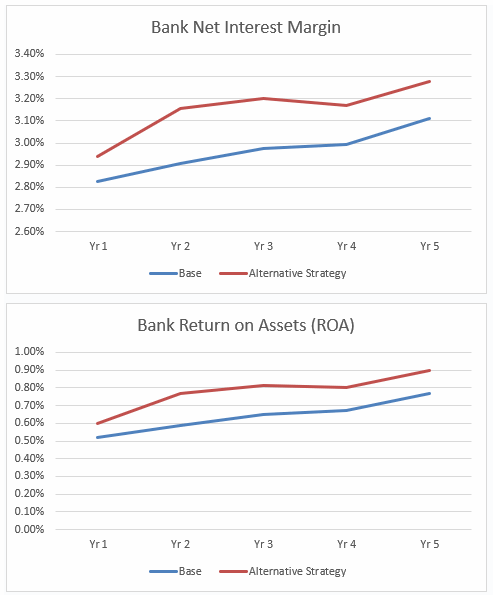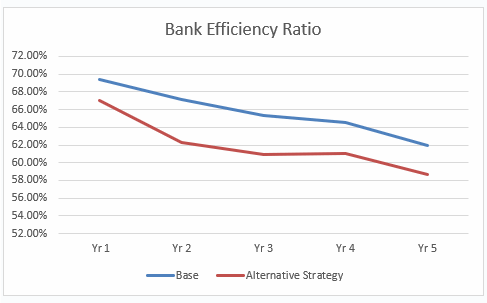Overcoming Loan Growth Challenges in 2021
January is typically a slow month for loan production at community banks, and the pandemic-hampered economy made the month even more challenging for many banks. The data from the Federal Reserve’s H.8 report showed that all loans were essentially flat in January for banks. For January, for small domestically chartered commercial banks (defined as not the top 25 ranked by assets), total loans outstanding were flat, C&I loans grew by 1.2% despite substantial PPP production, all real estate loans declined 0.4%, and CRE loans declined 0.5%. We believe that many community banks will not meet their target loan growth through 2021 using existing loan pricing strategies and marketing plans.
However, we have identified a strategy that we believe can substantially help some community banks in 2021 increase loan production for non-owner occupied commercial real estate (NOOCRE) and owner-occupied commercial real estate (OOCRE) loans by up to 10% per year. We analyzed this strategy using FiCast modeling to forecast performance for a few banks. In this article, we will discuss the strategy, the results, and why it might be effective for other community banks.
Our Analysis
We ran our strategy using a five-year time horizon. To take advantage of the current yield curve and borrower demand, we created a new loan structure for the bank that allows commercial lenders to offer ten-year fixed-rate loans where the bank retains the first two years of fixed-rate income and converts the remaining eight years to an adjustable rate. This strategy takes advantage of the current expected path of future interest rates. The bank also generates a 1% upfront fee that can be taken immediately into income. This structure is the same one we offer to other community banks through our Adjustable Rate Conversion (ARC) program. We will analyze the base and alternative case and used various interest rate movements over the five-year horizon. The analysis we demonstrate here is for an $850MM bank, with $83MM in equity, 2.91% NIM, approximately 5.3% ROE, and a 90% loan-to-deposit ratio.
With the ability to offer longer-term fixed-rate loans and recognize 1% immediate fee income, we can increase loan production, and more importantly, add substantial income in the first two years when the bank recognizes the yield on the fixed-rate and the 1% hedge fee. Using FiCast modeling, we were able to demonstrate over a five-year period an average of 6% increase in NIM, 21% increase in ROA, and an 18% increase in ROE, as shown in the graphs below.


Not only were we able to demonstrate an increase in yield and profitability, but the bank was able to decrease its efficiency ratio by an average of 5.6%, as shown in the graph below.

Furthermore, the alternative strategy was superior in producing income through the first five years not just for forecasted interest rates, but also in a down interest rate environment and the bank demonstrated superior income for up 100bps and up 200bps interest rates for the first four years, as shown in the graph below.

The strategy we recommended created easier sell for lenders, a more appealing product for borrowers, lower prepayment speeds, more cross-sell opportunities, and, overall, created a more profitable and more stable financial performance for the bank.
Conclusion
If your bank is a FiCast customer, we can run the model for your institution using assumptions that make sense for your balance sheet and local market. If you are not a FiCast customer, we can still share our strategy with you to create some meaningful outputs. We believe that some community banks will face loan production challenges in 2021 and managers must embrace novel solutions and products to maintain existing loan balances and add growth.

